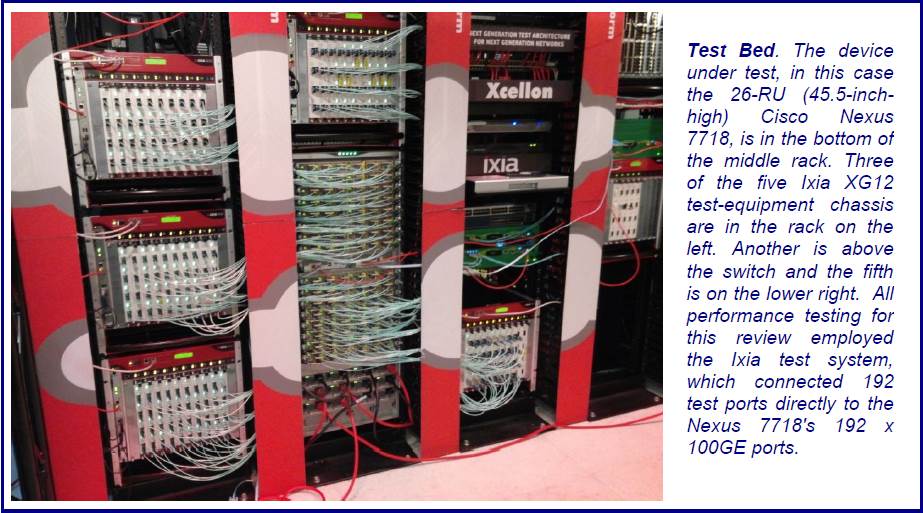This will probably date me, but when I started in telecommunications a few years back, 10-Mbps thin-net Ethernet was the cool new technology. I used to think, “Who would ever need that much bandwidth?” Since then, IT technology has changed dramatically, with applications continually demanding more and more bandwidth. Ethernet switching capacity has advanced by leaps and bounds to keep pace with demand, ratcheting up connectivity speeds from 10 Mbps to 100 Gbps. For most data centers today, 1- and 10-Gbps connectivity is commonplace. But now 100 Gbps is quickly gaining traction in the vertical markets that require the highest performance. If history is any indication, 100 Gbps will be commonplace in most data centers in the not too distant future.
To meet the high-performance demands of today’s service providers, research labs, and large enterprises, Cisco started shipping a 12-port 100-Gbps module for the Cisco Nexus® 7700 platform switches about a year ago.

The module is based on the Cisco® F3 chip, which offers the industry’s most comprehensive data center feature set for the core and the data center interconnect, including multicast, Multiprotocol Label Switching (MPLS), Virtual Extensible LAN (VXLAN), Cisco Overlay Transport Virtualization (OTV), and Cisco Locator/ID Separation Protocol (LISP). The module was designed to deliver line-rate performance with a total switching capacity of 1.2 terabits per second (Tbps). So, theoretically, a fully loaded Cisco Nexus 7700 18-Slot Switch chassis with 192 100-Gbps ports could deliver up to 38 Tbps of bidirectional throughput. No matter how you slice and dice it, that’s a lot of throughput—enough to meet the demands of any network.
As a matter of fact, 192 100-Gbps ports with 38-Tbps throughput would make the Cisco Nexus 7700 18-Slot Switch the industry’s highest-density 100-Gbps switch, with the Industry’s highest throughput rate. To verify this industry leadership, we put the switch to the test.
Cisco commissioned Miercom to conduct an independent performance test on a fully loaded Cisco Nexus 7700 18-Slot Switch with 192 100-Gbps ports. One of the first challenges Miercom faced was how to generate 38 Tbps of traffic to test line-rate performance. Miercom called upon Ixia’s world-renowned labs to help. The solution called for multiple Ixia Xcellon modules in Ixia’s iSimCity lab to conduct the tests (Figure 2).
Figure 2. Ixia test lab set up

Along with the raw throughput testing, Miercom also tested critical Cisco Nexus 7700 platform features to see how they would perform under full load. Tested features included MPLS, IPv4/IPv6 multicast, and hitless In Service Software Upgrade (ISSU).
After the testing was complete, the Cisco Nexus 7700 18-Slot Switch proved that it offers the industry’s highest 100-Gbps density and performance with line-rate services and exceptional availability. This level of scale provides customers with many years of investment protection as they transition from 1 and 10 Gigabit Ethernet to 40 and 100 Gigabit Ethernet architectures in the future.
Robert Smithers, CEO of Miercom, summed up the test results nicely: “Miercom independently exercised and evaluated Cisco Systems Nexus 7718 and was frankly stunned by the incredible power and throughput of this system, coupled with consistent low latency and latency variation, as well as solid MPLS support and high-availability features. The first switch we have independently tested with 192 x 100GE ports, the Cisco Nexus 7718 is awarded Miercom Performance Verified in our ongoing Data-Center-Class 100GE Switch Study.”
For the full details of the test, check out the comprehensive Miercom test report and accompanying test/results video. Also, here is what Miercom and Ixia had to say in their press releases.
Here’s a quick summary of the Miercom test results:
- Testing found the Cisco Nexus 7718 can forward at line rate on all 192 of its 100GE ports – delivering over 38 Terabits/s of bidirectional traffic
- Testing confirmed the Cisco 7718 can distribute real-world IPv4 and IPv6 multicast traffic at wire speed, with each of 191 receiver ports handling 1,250 IGMPv2 groups
- The Cisco 7718 can process real-world MPLS traffic at line rate on all 192 of its 100GE ports, with no loss and low latency
- Testing confirmed that an active Supervisor module or fabric module can be replaced with no packet loss, with IPv4 and v6 traffic running at high capacity on all of its 100GE ports
- The Cisco 7718 executed an in-service software upgrade, with IPv4 and v6 traffic running at high capacity on all 192 of its 100GE ports, with no loss
Visit the Nexus 7000 series webpage for more information on all the F3 modules and the latest innovations such as Cisco Remote Integrated Service Engine (RISE) and Intelligent Traffic Director (ITD) that continue to raise the industry bar for scale and efficiency.
CONNECT WITH US